Hoi An to Hue by Motorbike: Uncover A Scenic Adventure Through Vietnam’s Heart
Embarking on Hoi An to Hue by Motorbike is like flipping open a travel postcard where every turn frames a new view — powder-white beaches, emerald lagoons, and a ribbon of road that hugs a dramatic coastline. Whether you’re a seasoned rider or a curious traveler considering your first long scooter trip, this MOTOGO Tours‘ guide gives you everything you need: routes, safety, packing lists, food stops, and realistic itineraries. Ready to feel the wind and taste salty air? Let’s roll.
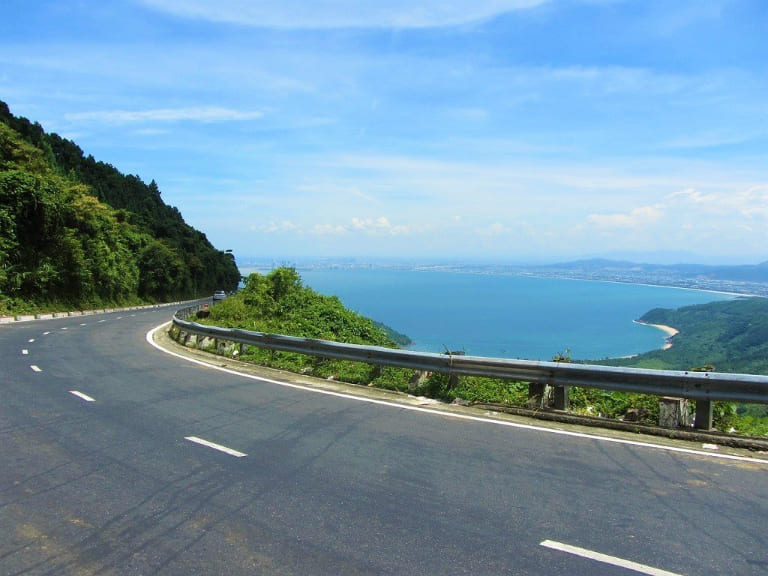
Four Scenic Routes from Hoi An to Hue bu Motorbike: A Detailed Guide
Starting the trip from Hoi An to Hue is like opening a book with four chapters, each with its own pace and breath of Central Vietnam. Every path shows a different side of this area’s beauty, whether you like the long coastlines, the foggy mountains, the quiet river valleys, or the ease of getting from A to B. Here is a heartfelt look at each route to help you choose the one that speaks to you.
Route 1: The Coastal Classic via Hai Van Pass
- Route: The iconic Hai Van Pass route
- Distance: 135 km
- Estimated Travel Time: 3-5 hours
- Highlights: Stunning ocean views, forests, lakes, fishing villages, Lang Co Beach, Lap An Lagoon
This is the route that travelers love, and there’s a good reason for that. The Hai Van Pass is known as one of the most beautiful coastal highways in the world. It offers a rare mix of drama and peace. Jeremy Clarkson once praised it on Top Gear for its stunning curves, steep climbs, and movie-like views of the ocean. He said it was so beautiful and had such unforgettable views that it was worth celebrating.
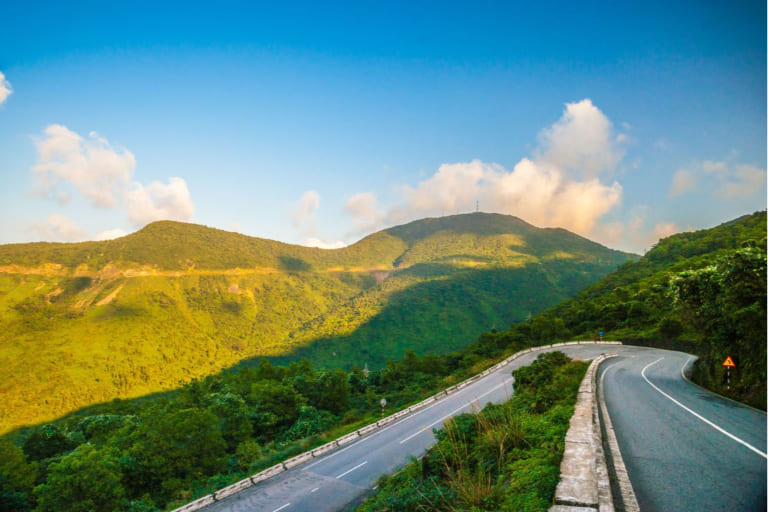
After the Pass’s winding spine, you’ll slowly go down to the calm waters of Lang Co Beach. The trip changes here, going from fast-paced, high cliffs to soft breezes and quiet back roads. You will pass by oyster farms that shine in the sun, small fishing villages where life moves at its own pace, and the peaceful Lap An Lagoon, where the water shines like polished glass.

As the landscape slowly opens up into coastal plains, you might see beautiful Vietnamese graveyards with imperial-style architecture. These are silent reminders of history and heritage that are carved into the land. The road eventually takes you along the shores of Thuan An Beach and then into Hue, the old imperial capital that is now a poet’s paradise. This route is perfect for travelers who want to feel the ocean breeze, experience Vietnamese culture, and get close to the heart of Vietnam.
Route 2: The River Valley Route Behind Bach Ma National Park
- Route: Newly built middle route, bypassing the Hai Van Pass
- Distance: 125 km
- Estimated Travel Time: 2-3 hours
- Highlights: Green valleys, pristine rivers, dense jungles, crop fields, mountain views
This new road makes a peaceful detour through Central Vietnam. It is a shorter path that still offers the rider beautiful views. This road goes behind Bach Ma National Park instead of along the coast, taking you into the quieter, greener heart of the area. There are fields, forests, and stillness in this area, which is not affected by coastal traffic.
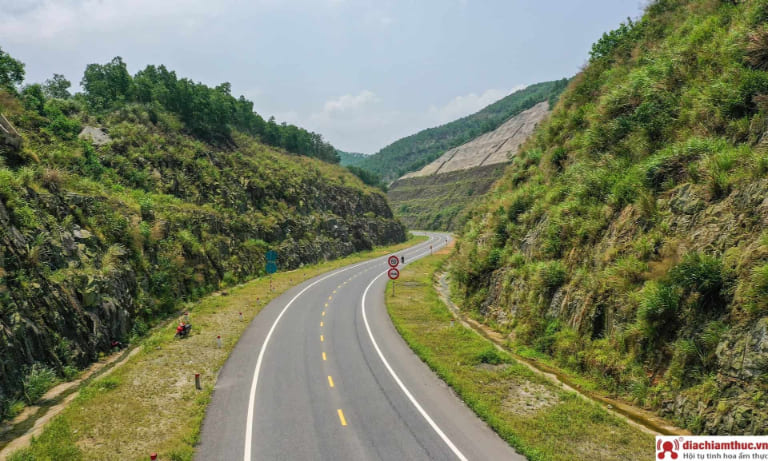
The Cu De River valley is a peaceful place to start your journey. The road runs along the water and then goes through the Mui Trau Tunnel, which takes you under the mountains. When you come out of the tunnel, it feels like you’ve entered a new world. There are lush farmlands, dense patches of jungle, and the shapes of distant mountains rising and falling like waves.
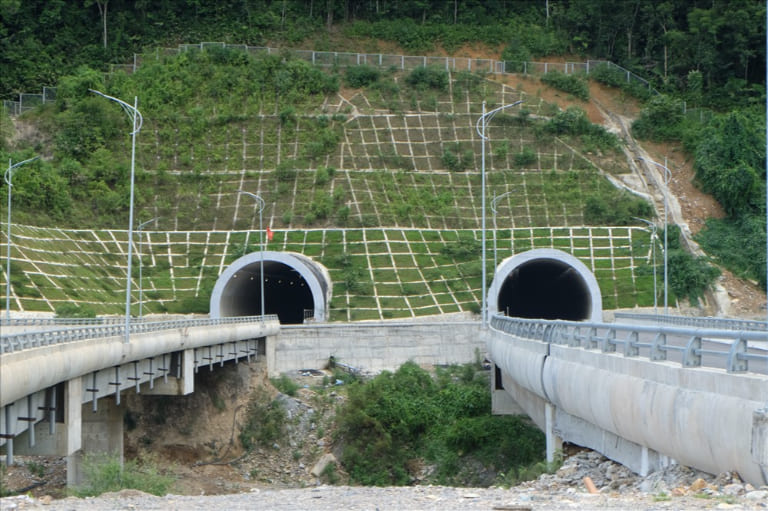
This new route has quickly become a favorite because of its smooth pavement and beautiful views. It’s the best way to get around if you want to go faster without missing out on seeing the quieter side of Vietnam’s natural beauty.
>>> Explore the Hai Van Pass Motorbike Tour: A Scenic Ride Through Vietnam
Route 3: The Mountainous Adventure on Ho Chi Minh Road
- Route: The Ho Chi Minh Road, through the Truong Son Mountain Range
- Distance: 270 km
- Estimated Travel Time: 1-2 days
- Highlights: Majestic mountains, dense rainforests, deep valleys, ethnic minority villages
This path is more than just a road; it’s a journey. The Ho Chi Minh Road is one of the most amazing trips in Vietnam for people who like to travel and love wild places. It takes you far from the coast and deep into the rugged beauty of the Truong Son Mountain Range along the famous historical route near the Laos border.

The ride starts out quietly on the coastal plains, but soon the road goes up into the foothills, where mountains are on both sides and rivers cut silver paths through green valleys. If you’re lucky, you might see rare birds or hear the rustling of animals hiding in the green. The road is surrounded by thick forests.
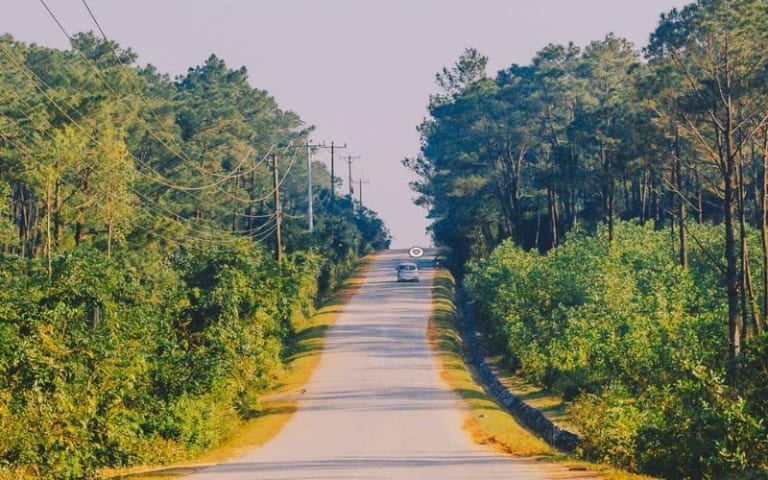
When you get closer to the mountain town of Prao, the view gets even better. There are misty rolling hills, remote villages with ethnic minority groups living in them, and tall peaks that make you feel small in a good way. Instead of rushing past, many travelers spend the night in Prao to take in all of its beauty. From there, the road winds through narrow mountain passes, giving you wide views of untouched wilderness before gently going down to the edge of Hue.
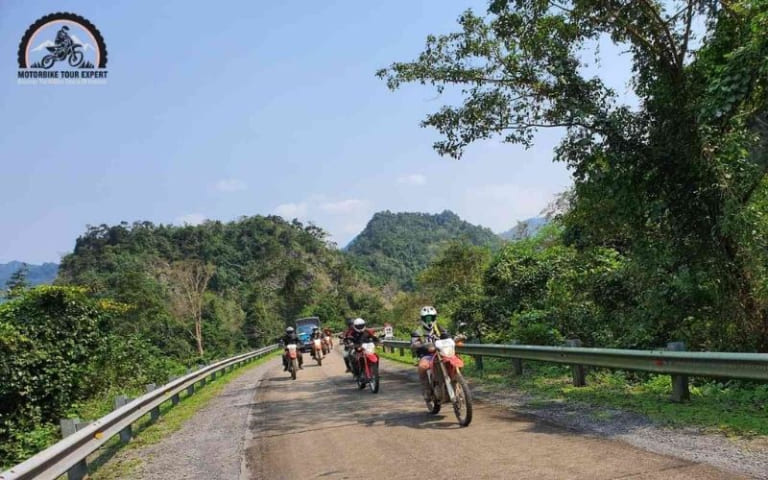
You could technically cover the distance in one day, but taking your time makes the trip more than just a trip; it becomes a cherished memory. This path is for people who want to be alone, face a challenge, and see nature at its best.
Route 4: The Direct Route via Hai Van Tunnel
- Route: Highway QL1A, through the Hai Van Tunnel
- Distance: 95 km
- Estimated Travel Time: 2-3 hours
- Highlights: Coastal plains, Hai Van Tunnel, Lang Co Beach
Highway QL1A is the fastest and easiest way to get from Da Nang to Hue for people who want to get there quickly and easily. It may not have the beautiful scenery of the other routes, but it gets you where you need to go quickly, which is what it was made for.
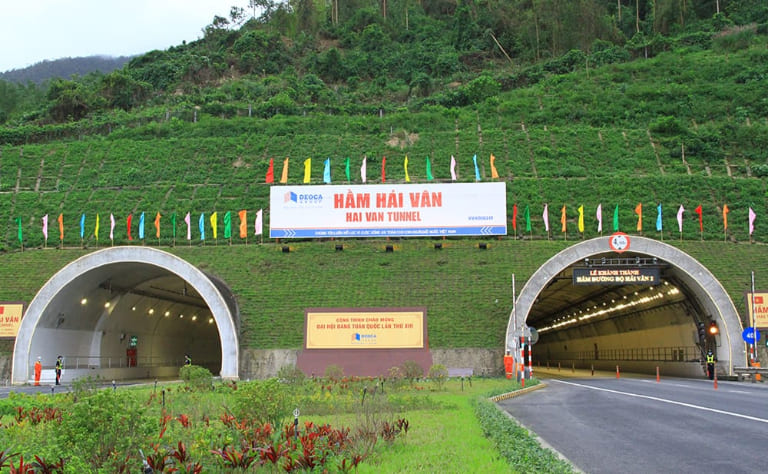
The Hai Van Tunnel, which is 6.3 kilometers long and the longest tunnel in Southeast Asia, is the main attraction on this route. Since it opened in 2005, it has cut down on travel time by a lot and made the winding Hai Van Pass safer and more reliable. Trucks, buses, and private cars mostly use the road, and there aren’t many scenic stops. But as you go along, you’ll still be able to see Lang Co Beach and Cau Hai Lagoon for short periods of time.

One problem for motorcyclists is that they can’t go inside the tunnel on their bikes. A convenient shuttle service runs all day, and for a small fee of about 30,000 VND (about $1.30), it safely transports bikes. It’s quick and easy, and it makes sure you can still use this direct route without any problems.
Preparing for the Motorbike Journey
Taking a motorbike from Hoi An to Hue is more than just a ride between two cities; it’s a journey that takes you through coastlines, mountains, fishing villages, and changing landscapes. And like any great adventure, it needs careful planning. The ride will be safer, smoother, and much more fun if you plan ahead and bring the right gear.
Choosing the Right Motorbike
Choosing your motorbike is one of the most important choices you’ll ever make. The bike you ride becomes your companion for the day—your balance, your rhythm, your sense of control—all shaped by how well it fits your skill level and comfort.
- Beginners often choose semi-automatic bikes. They’re easy to use, forgiving, and easy to rent. Semi-automatics give you just the right amount of control over gears without having to fully commit to operating a clutch if this is your first time riding longer distances in Vietnam. That being said, they can feel weak on hard parts, like the steep curves of the Hai Van Pass.
- Experienced riders who want their bikes to respond quickly prefer manual bikes. These bikes are great for steep hills and tight turns because you can control every gear change. A manual bike gives you the confidence and stability you need to ride on different types of terrain if you know how to use a clutch and like a more dynamic ride.

Condition Check
Take a moment to check your bike carefully before you get on the road. This simple thing can make a big difference.
- Check the oil levels, tire pressure, lights, and brakes. Check that the frame feels strong and that the throttle works well. And don’t forget the horn and turn signals. These small things are very useful in Vietnam’s busy, unpredictable traffic.
- Most good rental shops offer basic roadside assistance and keep their bikes in good shape. It’s always a good idea to ask when the bike was last serviced or to ask for a test ride before you buy it.
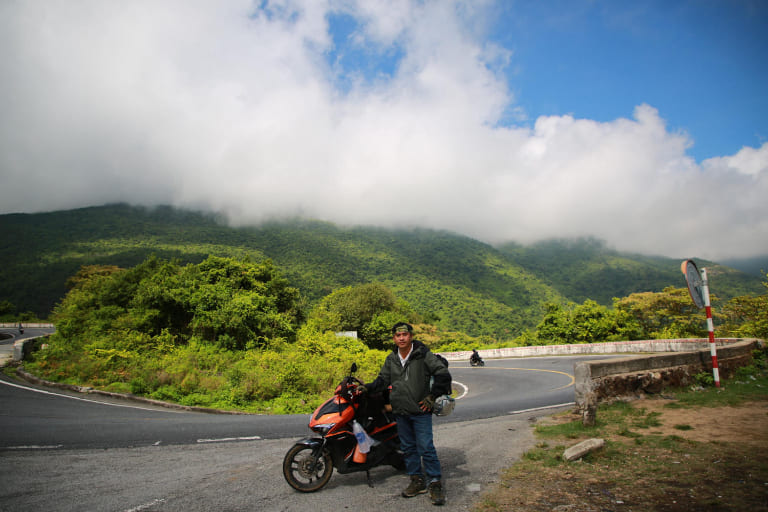
Essential Gear and Packing Tips
It might look easy to get from Hoi An to Hue on a map, but the tropical weather and sudden changes in weather tell a different story. Packing smart keeps you safe, comfortable, and ready for anything.
- Helmet: A good helmet is a must, not an option. Pick the best one you can find, preferably a full-face helmet that protects you from dust, gravel, bugs, and the unexpected turns of the Hai Van Pass. A built-in visor protects you from wind and debris, which is nice.
- Protective Clothing: In Vietnam’s heat, you might want to wear as little as possible, but long sleeves and light protective layers are your best friends. They protect you from sunburn, road rash, and small pieces of flying debris. Find fabrics that let air in and dry quickly to keep you cool and safe.
- Rain Gear: The weather along the coast can change quickly. A small rain jacket or poncho doesn’t take up much space, but it can save your day when the rain starts without warning. Waterproof over-pants are a great way to stay comfortable when it’s raining.
- Toolkit and Spare Parts: Most rental companies give you a small tool kit with the basics, like screwdrivers, wrenches, and a kit for fixing tires. Having these tools on hand can help you get help quickly on the side of the road, even if you don’t know how to fix things. They might also give you spare parts, which is another small comfort when you’re driving for a long time between towns.
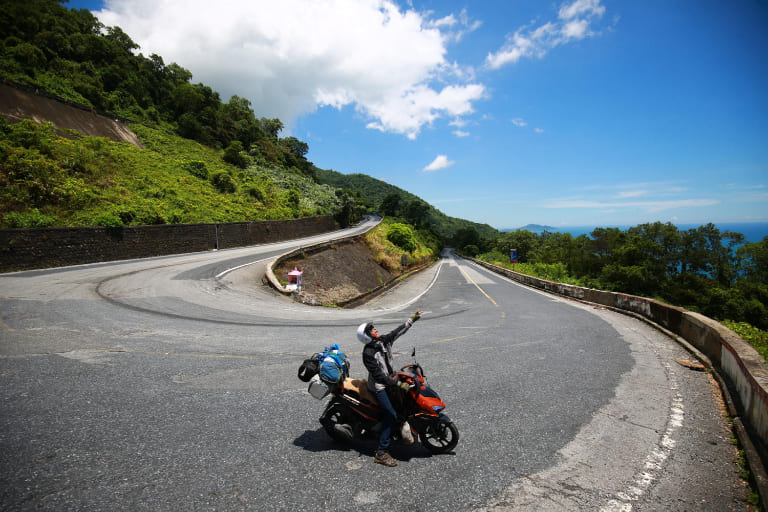
>>> Let’s see more: Quang Ngai Loop – Travel Guide to Vietnam’s Hidden Scenic Route
Safety Tips for the Hoi An to Hue by Motorbike
Travelers will remember riding a motorbike from Hoi An to Hue for years. The wind in your face, the ocean next to you, and the mountains rising ahead are all things that will stay with you. But safety should always be at the top of your list of things to do while you’re having fun. Your trip can be both exciting and safe if you plan ahead and know what to expect. Here is a full list of the most important safety tips that all riders should follow.
1. Ensure Proper Gear and Equipment
- Helmet: Your helmet is the first and most important thing that protects you. Always wear a helmet that fits well and is made of good materials that meet safety standards. Vietnam has helmet laws for a reason: this simple piece of gear can save your life on roads that aren’t always safe.
- Protective Clothing: The heat in Vietnam may make you want to wear light clothes, but you need to wear protective gear. Wearing long pants, gloves, a sturdy jacket, and shoes with closed toes can help keep you safe from sunburn, road rash, and other things that might fall on you. Even light gear gives you a big safety boost without making you feel uncomfortable.
- Rain Gear: The weather changes quickly, especially near the mountains. A compact waterproof jacket and pants are easy to pack and can be lifesavers when sudden rainstorms strike. Staying dry helps you stay focused and see clearly.
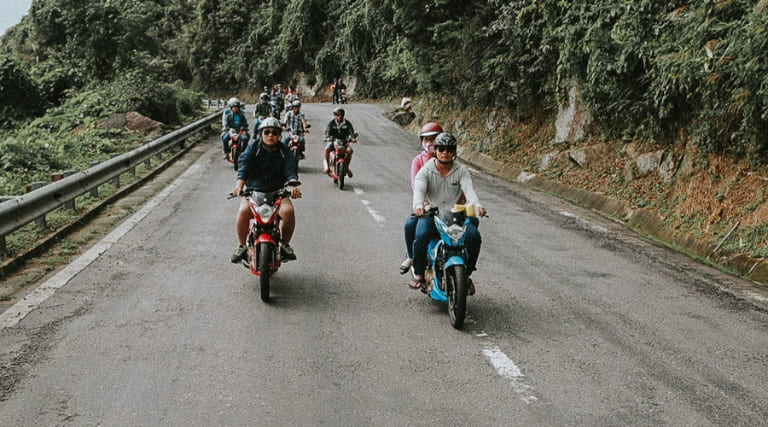
2. Check Your Motorbike Regularly
For a safe and stress-free trip, your bike needs to be in good shape. Don’t just trust the rental shop; check your motorcycle yourself before you leave.
- Brakes: Check both the front and back brakes at the start of each day. You need brakes that work well, especially when going down steep hills like the Hai Van Pass.
- Lights and Signals: Make sure your headlights, taillights, and turn signals are all working properly. It can be hard to see when it’s dark, like at sunrise, sunset, or in fog. That’s why working lights are so important for talking to other drivers.
- Tires: Check the tread and the pressure in the tires. Wet or bumpy roads can be slippery, and your tires are the only thing that touches the ground. Good grip means you are safe.
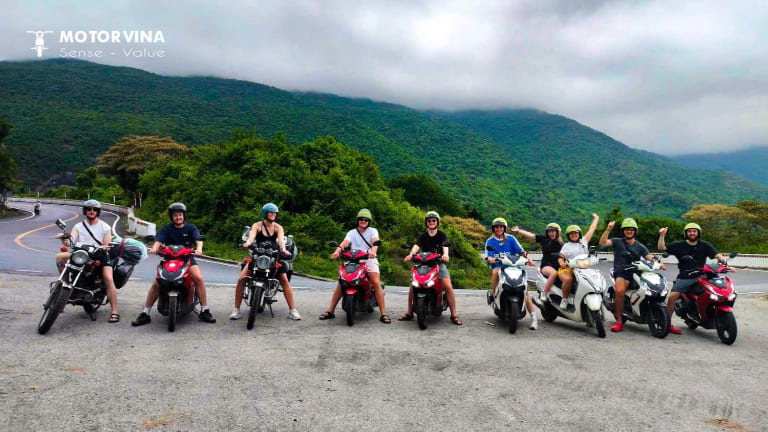
3. Monitor Weather Conditions
The weather in Vietnam changes all the time because of its mountains and coastline. During the rainy season (September to December), a sunny morning can quickly turn into a rainy afternoon. Before you leave, always check the weather forecast. If the weather forecast says storms or heavy rain are on the way, you might want to change your route, leave earlier, or wait for the weather to clear up.

4. Be Cautious on the Hai Van Pass
The Hai Van Pass is the best part of the trip from Hoi An to Hue. It’s beautiful, wide, and unforgettable. But it also needs respect from all riders.
- Sharp Curves: There are a lot of tight turns and blind corners on the pass. Before you turn, slow down, keep control, and don’t brake hard in the middle of the curve.
- Fog and Low Visibility: In the mornings and late afternoons, mist often covers the pass, making it harder to see. If the weather gets foggy, slow down, turn on your headlights, and stay a safe distance from other cars.
- Steep Inclines: Get ready for both going up and down. To keep power while going up, switch to a lower gear. When going down, use engine braking to control your speed and keep your brakes from getting too hot.
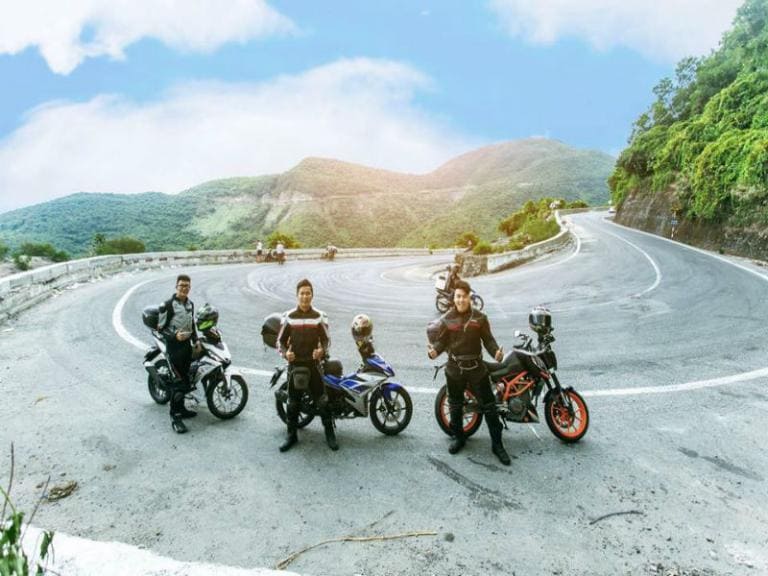
Taking a motorbike ride from Hoi An to Hue is an unforgettable experience that shows off Vietnam’s beauty in a whole new way. Every kilometer offers something breathtaking, whether you’re gliding along the coast, climbing mist-covered mountains, or passing through charming local villages. Cultural sites, friendly locals, and the freedom of the open road make this trip much more than just a transfer.
Related Posts:
- Beautiful Routes in Central Vietnam: Scenic Adventures You Can’t Miss
- Explore Phong Nha by Motorbike: A Thrilling Adventure in Vietnam
- Golden Loop Vietnam: The Ultimate Travel Guide to a Majestic Road Trip
- Discover the Muong Long Loop – Vietnam’s Scenic Road Adventure



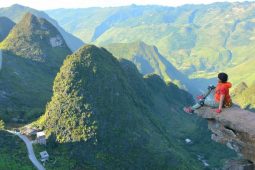

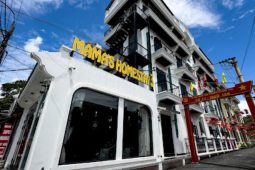


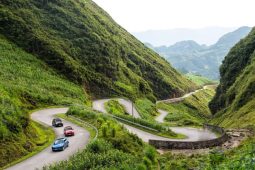


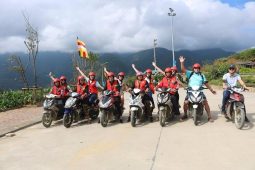
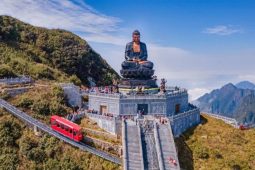
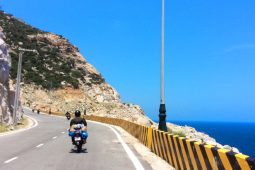
Be the first to comment!